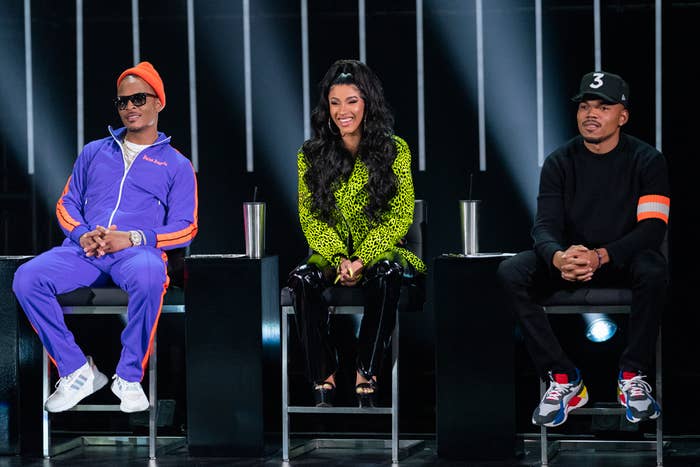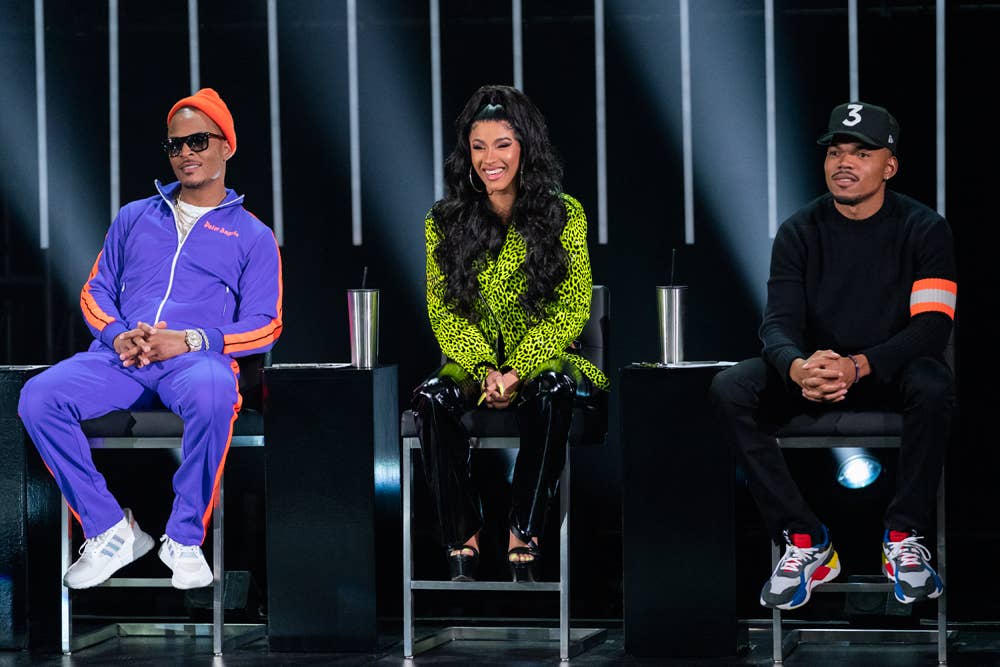
Reality shows are often light on reality. The manufactured drama of so much reality television seems at odds with hip-hop, an artform that prizes authenticity. This might be one reason why it took so long for a rap competition show to become a breakout hit.
Netflix’s Rhythm + Flow isn’t just a hit, it is one of the best television shows of the year, precisely because it embraces authenticity in a television format that so often feels completely fabricated.
The first season’s final batch of episodes dropped this past Wednesday and the results were no surprise. Inglewood rapper D Smoke, an immensely talented hip-hop veteran who throughout the series has been compared to Kendrick Lamar—a comparison the show itself seemed to knowingly wink at by pairing him with none other than prolific TDE producer Sounwave for the final competition—won the contest. Smoke was clearly the best contestant and there was little doubt that he would take home the $250,000 prize.
Smartly, neither the producers nor the judges tried to make the contest something it wasn’t. While fellow finalists Londynn B and Troyman have serious talent and were often praised by the judges, they were never made to look better than Smoke if the results didn’t speak for themselves.
Judges T.I., Chance the Rapper, and Cardi B were incredibly clear from the beginning. They wanted to find the most technically talented rapper who they also thought was marketable. Through this lens, all three of them administered tough but fair critiques through various challenges like music videos, cyphers, and one-on-one rap battles. They didn’t just evaluate the work before them; they always tried to situate what they saw within the actual hip-hop industry.
Cardi was the businesswoman, focusing on the artist’s chance of success. Chance was the aesthetic, cerebral judge, aiming his feedback at an artistic level. T.I. fell somewhere in the middle, leaning back in his seat, ever the wise (and verbose) mentor, trying to meet the contestant exactly where they were coming from. No one played the role of encouraging cheerleader. As my wife said after a particularly tough round of judging, “They’re all Simon Cowell.”
Rhythm + Flow is different from other musical contest reality shows. American Idol and The Voice recruit singers from such a broad spectrum, and it’s hard to imagine Blake Shelton giving precise technical critiques to an aspiring R&B songstress. The Masked Singer and Dancing With the Stars rely on celebrities, so the process isn’t as important as drama.
This show actually has much more in common with more niche shows like Ink Masters, Great British Baking Show, or RuPaul’s Drag Race where experts in a craft earnestly mentor contestants looking for someone they could see as a peer. In shows like these, you see how the tattoo or the pastry gets made. In that spirit, Rhythm + Flow captures what it is like to create art.
The most controversial episode of Rhythm + Flow’s first season was easily “Rap Battles.” Half the group was culled in this episode and aggressive rappers were rewarded over more creative contestants.
However, the battle episode defined what Rhythm + Flow was trying to achieve. The stated mission of the judges wasn’t to simply pick the best artist, but find the best artists who they could sell to the world. While rap battles aren’t necessarily an essential part of the hip-hop artist’s arsenal, confidence, determination, and a little aggression are required.
“Rap Battles” saw two fan favorites sent home: Old Man Saxon and Beanz. Saxon is a quirky Denver rapper who performs in a suit and cites Cab Calloway as an influence. Beanz is a hard as fuck female MC from Reading, Pennsylvania. While you could easily imagine Saxon killing it at an NPR Tiny Desk Concert or Beanz going viral for a particularly savage YouTube freestyle, it is difficult to see them headlining an awards show or crossing over into Top 40 consciousness.
Beanz was eliminated by Flawless Real Talk, a Providence, Rhode Island rapper who is technically skilled but aesthetically one-note. Complex’s own Frazier Tharpe called him, “a straightforward mid-aughts kind of guy,” and when you see his macho anger mixed with tearful romance, you know exactly what he’s talking about. Armed with verses about triumphing over adversity, the “Puerto Rican Papi” gave us the same flavor week after week, yet still made the finals.
Flawless illustrates one of the problems of feel-good stories of small market artists on shows like this. While he is technically skilled, you don’t get the sense that Flawless can expand hip-hop as an artform. In a city like Providence, you don’t have the cutting-edge peers you would in The Bronx or Inglewood. There’s a reason the great novelists and painters of the Lost Generation all lived in Paris and not Brussels.
The season finale—which featured Troyman, Londynn B, Flawless, and D Smoke—allowed each contestant a full-on awards show-style performance of an original song. Here, the contestants put together all the tools we watched them perfect throughout the season. Troyman came with a hard trap track so street it is literally called “Streetlights,” Londynn B oozed tough sensuality on “Only One”, and D Smoke offered an aesthetic and technical master class with his spiritual, contemplative banger “Last Supper.”
Flawless was, well, flawed. His energetic anthem, “On My Way,” which was somehow excessively angry and cloyingly feel-good at the same time, struck the same dull notes of struggle, family, and destiny.
While Flawless was the low point of an electric finale, he reminded us of the goal of the competition. Would Old Man Saxon or Beanz have done better at that stage? Maybe. But, if you go on Twitter and cruise the #RhythmandFlow hashtag, you’ll see women from all over the country gushing over Flawless, the pretty boy small city father trying to make good.
T.I., Chance, and Cardi had one last lesson to teach: you don’t have to be particularly interesting to make people love you.
The key to Rhythm + Flow’s success is that it is real to the point of frustration. Season 1 didn’t make time for manufactured beefs or false feel-good narratives. It is that realness that makes Rhythm + Flow special.
It’s hard to say if reality television can be art. But, a reality TV show that is honest about how art works is the next best thing.

